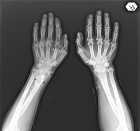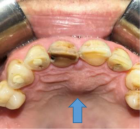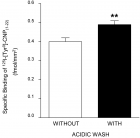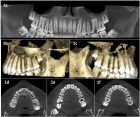Early Online (Volume - 9 | Issue - 2)
Developing an Explainable AI System for Digital Forensics: Enhancing Trust and Transparency in Flagging Events for Legal Evidence
Published on: 3rd July, 2025
Advanced forensic approaches are necessary to handle digital crimes, as they must provide transparent methods that foster trust and enable interpretable evidence in judicial investigations. The current black-box machine learning models deployed in traditional digital forensics tools accomplish their tasks effectively yet fail to meet legal standards for admission in court because they lack proper explainability.This study creates an Explainable Artificial Intelligence (XAI) system for digital forensics to improve flagging events as legal evidence by establishing high levels of trust and transparency. A digital evidence system employs interpretable machine learning models together with investigative analysis techniques for the detection and classification of computer-based irregularities, which generate clear explanations of the observed anomalies.The system employs three techniques, including SHAP (Shapley Additive Explanations) alongside LIME (Local Interpretable Model-agnostic Explanations) and counterfactual reasoning to deliver understandable explanations about forensic findings, thus enhancing investigation clarity for law enforcement agents and attorneys as well as stakeholder professionals.The system performs successfully on actual digital forensic datasets, thus boosting investigation speed while minimizing false alerts and improving forensic decision explanations. The system must demonstrate GDPR and digital evidence admission framework compliance to maintain legal and ethical correctness for usage in court procedures.Forensic digital investigations need explainable Artificial Intelligence as an essential integration for creating reliable and legally sound practices.
Challenges in Y-DNA Recovery from Fabric: Effects of Environmental Degradation and Implications for Forensic Casework
Published on: 4th July, 2025
Y-chromosomal DNA (Y-DNA) testing plays a critical role in forensic investigations involving male suspects, especially when traditional autosomal DNA evidence is insufficient or degraded. This review explores how different environmental factors—such as heat, moisture, Ultraviolet (UV) exposure, and microbial activity—impact the ability to recover Y-DNA from fabrics commonly found at crime scenes, including cotton, polyester, and denim. The study found that longer exposure to harsh environments, especially humidity and UV radiation, led to a sharp drop in the amount and quality of recoverable Y-DNA. The type of fabric also influenced results, with cotton generally retaining more DNA than synthetic materials like polyester. These findings reinforce the need for quick evidence collection and proper storage to preserve the integrity of Y-DNA. Several real-world cases are highlighted where Y-DNA analysis provided clear forensic outcomes, especially when autosomal DNA failed due to issues like allelic dropout—where one or more genetic markers fail to appear during testing—or secondary transfer, which occurs when DNA is unintentionally passed from one surface or person to another. In such cases, Y-DNA profiling was crucial in narrowing down or identifying male suspects, particularly when other forms of DNA were inconclusive. This review underscores the unique value of Y-DNA analysis in situations involving degraded or limited biological material and calls for the development of better recovery techniques to improve success in challenging forensic contexts.
Acute Gas Toxicity at Work: A Tale of Two Cases with Review of Literature
Published on: 4th July, 2025
Hydrogen sulphide [H2S] is created when sewage material breaks down. The well-known "rotten egg" odour is linked to H2S at low quantities. It is a colourless and odourless gas that, at greater quantities, can cause cerebral and respiratory depression, fast unconsciousness, and impending death. As a sad occupational accident, worker deaths in septic tanks or sewage systems are not unusual in medico-legal practice.Death is attributed to poisoning with hazardous gases, particularly hydrogen sulphide, but the depletion of oxygen in the air due to an excess of carbon dioxide is not mentioned. Colleague fatalities are frequently linked to deaths in similar situations. Two tragic accidents that resulted in victim deaths are detailed in this paper. Here, the morphological findings—pulmonary diseases, submucosal/sub-serosal congested haemorrhage, and discolouration from postmortem staining—were discovered in both cases. A detailed scene investigation about the potential for life-threatening H2S poisoning for the assistants, the characteristic rotten egg smell that may be detected on the corpses, and the previously described morphological results should be the foundation for any suspicion of a deadly H2S poisoning. A qualitative and, if feasible, quantitative study of H2S should be performed to confirm the diagnosis.
Impact of Rainy Environments on Nitrate Ion Detection in Post-blast Soil Analysis: A Forensic Study
Published on: 14th July, 2025
The forensic identification of nitrate ions in post-blast pit soil samples is crucial for investigating nitrate-based explosive incidents owing to environmental factors such as rainfall and monsoon conditions, which can significantly alter the concentration and distribution of nitrate residues at blast sites, as nitrate ions are completely soluble in water. This study investigated the influence of rainfall on the retention and detectability of nitrate ions in pit soil collected from spiked simulated explosive samples, replicating the topographical conditions of hilly regions frequently impacted by insurgent and terrorist activities. Ion Chromatography (IC), a highly sensitive and selective analytical technique, was employed to quantify nitrate ion concentrations within the soil matrix. This study aimed to elucidate the mobility, leaching behavior, and retention of nitrate ions in soils affected by blast under natural drizzling rainfall conditions.
Prediction of Stature using Percutaneous long bones of the Upper and Lower limbs among Asante and Ewe Ethnic Groups in Ghana
Published on: 8th August, 2025
Introduction: Sophisticated technological advancements for the identification of people are readily available in developed countries. Meanwhile, relatively less expensive algorithms in physical anthropometry could be employed for such identification purposes. Although such evaluations have been done in some countries, due to interpopulation variations, such relations should be ethnic-and sex-specific. Aim: Therefore, the present study sought to assess the relationship between the long bones of the upper and lower limbs among two ethnic groups in Ghana for stature estimation. Methodology: Using a purposive non-random sampling technique, participants made up of 140 Asantes and 102 Ewes aged 20 to 25 years were recruited after an ethical approval was obtained from the Committee on Human Research, Publication and Ethics, KNUST. Results: For the same sex, there was no statistically significant difference between Asantes and Ewes concerning height. The most useful parameters for stature estimation among the Asante males were left fibular and tibial lengths, with those of the females being left ulnar, fibular, and radial lengths. However, for the Ewe males, the most significant parameters for height estimation were right fibular and humeral lengths, whereas for the Ewe females, being right tibial and humeral lengths. Conclusion: Findings of the study are useful for the identification of humans with dismembered body parts involved in various disasters, such as automobile accidents. The database and formulae derived would be useful for stature estimation needed in biological profiling and other assessments of bedridden patients.
A Prospective Study to Determine Any Correlation between Unnatural Death, Life Line, and Hand Anthropometry
Published on: 11th August, 2025
A study of palm lines, various landmarks on the hand, and their correlation with the hand's anthropometric dimensions may sometimes help predict various future events in the life of an individual. We try to find out any correlation between these appearances and the sudden death of an individual. In the present study, we collected data from an individual’s hand after carefully breaking the rigor mortis in the deceased brought for medicolegal postmortem examination and measured the different dimensions. The data were then subjected to statistical analysis. The article may help rule out the cultural belief about the study of the lifeline and age at the time of death. Palmistry is a self-interpretation of changes in or around the lifeline by an individual, and it varies from person to person. There is no concrete literature proof available that suggests its importance in ascertaining the age of the individual.We also observed that there is no close relation between the age interpreted by the lifeline and the biological age of the individual. Our study shows that the individual either lives too long or too short compared to age by the lifeline.We observed that unnatural deaths are more common in young individuals, and males outnumber females. According to the cause of death, hanging, accident, and poisoning are the most common, followed by sudden death and homicide. In our study, we observed that there is no correlation between unnatural death and the lifeline of an individual and age at the time of death.
Forensic Perspectives on Human Chimerism: Identification Challenges and Detection Strategies
Published on: 9th September, 2025
Chimerism is a biological condition in which a single individual harbors two or more genetically distinct cell populations originating from different zygotes. This phenomenon may occur naturally due to errors during fertilization or early embryonic development, or it may arise artificially following medical interventions such as hematopoietic stem cell transplantation (HSCT) or in vitro fertilization (IVF). Chimerism is broadly categorized as natural or artificial, and its presence presents significant challenges in both clinical and forensic contexts. In transplant recipients, the coexistence of donor- and host-derived cells can generate misleading genetic test results and complicate post-transplant monitoring. In forensic investigations, individuals with mixed DNA profiles may be difficult to identify accurately, as standard genetic fingerprinting technologies can yield inconclusive or erroneous findings. These complications underscore the necessity of reliable detection methods capable of identifying and differentiating chimeric cell populations. This review consolidates current knowledge regarding the classification of chimerism and the available diagnostic techniques, emphasizing that improved understanding of this condition is essential for enhancing diagnostic precision, optimizing forensic identification, and minimizing the risk of misinterpretation that may adversely affect medical decisions and legal determinations.
Minds after Death: The Expanding Role of Psychological Autopsy in Investigations: A Review
Published on: 12th September, 2025
Deaths can result from deliberate self-harm (DSH), accidents, natural causes, homicides, or remain unidentified, causing prolonged distress for the deceased’s family and challenges for authorities. Suicide, a significant public health concern, exemplifies self-destructive behavior often unnoticed or partially noticed. Psychological Autopsy (PA) is highly needed in India due to the significant suicide rate and the complex factors contributing to it. Various nations, including the USA, UK, Canada and Australia, have already recognized psychological autopsy as crucial evidence in court. Although PAs are performed in India, their legal acceptability remains debated. It helps in giving a lesser clouded vision of the victim profile and at times even facilitates the specific definition of the cause of death. Studies reveal that about 90% of those who commit suicide suffer from one or more mental disorders, with depression most common; hence, this finding has been beneficial in identification and treatment of such cases at earliest so as to prevent suicide. Recommendations for the future development of this method include embracing modern communication methods and ‘invisible informants’, cultural intersections, safeguarding of reliability and validity, and the use of feasibility trials. The emphasis remains on collating the raw narratives at the core of these interviews, which make the psychological autopsy such a unique and perceptive tool.

HSPI: We're glad you're here. Please click "create a new Query" if you are a new visitor to our website and need further information from us.
If you are already a member of our network and need to keep track of any developments regarding a question you have already submitted, click "take me to my Query."





















































































































































